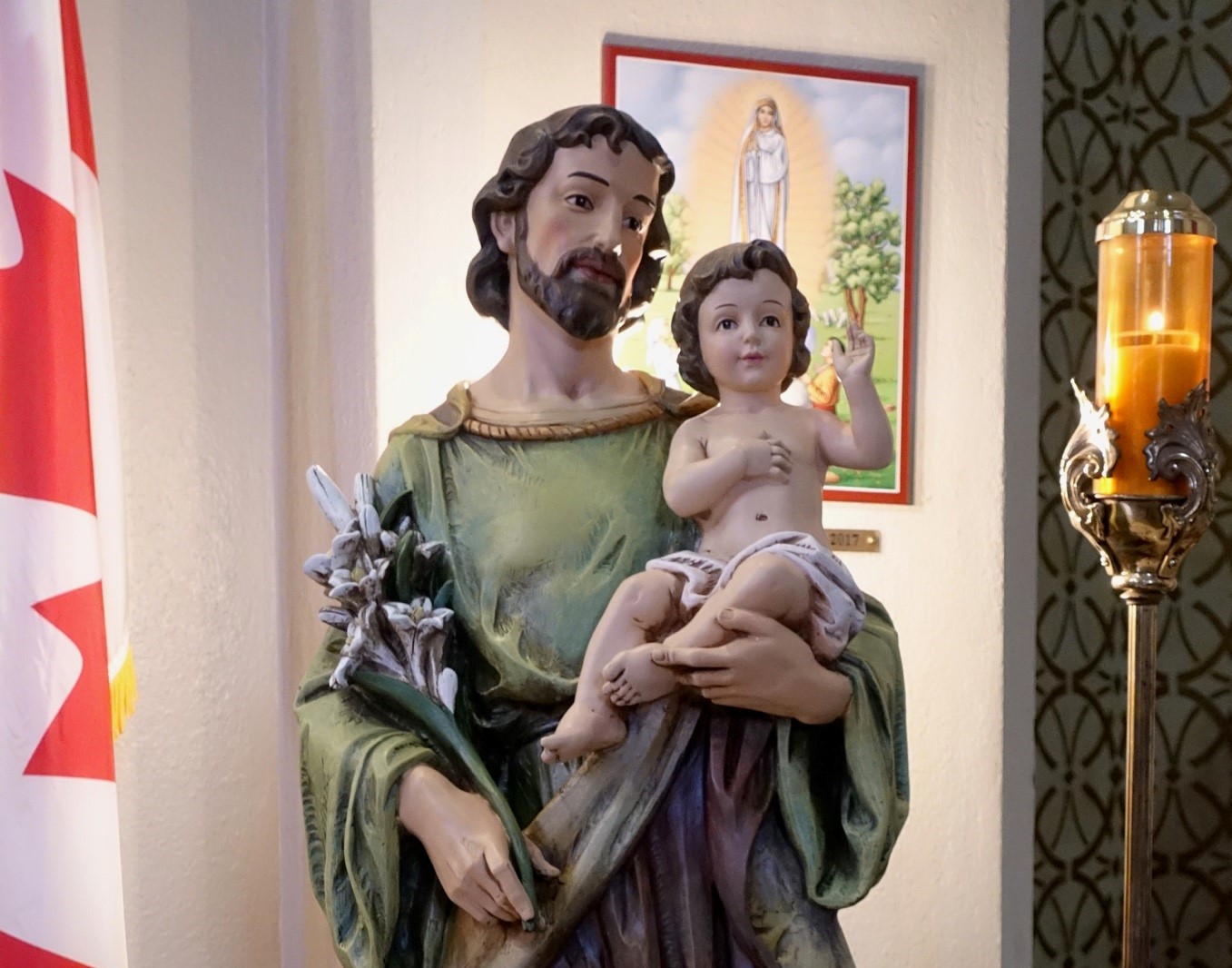- Strona główna
-
Nasza wspólnota
- Archdiocese of Toronto
- Catholic Cemeteries
- Wolontariat
- Dostępność
- Polityka bezpiecznego środowiska
- Our Schools
- Adam Pantaleo Ordained to the Diaconate
- Nasza wiara
- Nasze duszpasterstwa
- Życie parafialne
- Biuletyn
- Skontaktuj się z nami
- Wyszukaj

Crossings: A Journey to Easter
Crossings is an outdoor visual art exhibition that engages the Scriptural Stations of the Cross. Running from March 2 to April 14, the exhibition features 16 art pieces at 16 different locations in Toronto on a pilgrimage style “journey to Easter.” Below, John Franklin, Executive Director of Imago – hosts of the Crossings Toronto Arts Exhibition – shares his thoughts on this Lenten experience.
What are the Scriptural Stations of the Cross?
The Scriptural Way of the Cross or Scriptural Stations of the Cross is a recently created variation of the traditional Stations of the Cross. St. Pope John Paul II was responsible for inaugurating this version first performed on Good Friday in 1991 and many times subsequently at the Colosseum in Rome. Providing a strong connection between each station and a biblical passage is intended to enrich the experience of the long-standing devotional practice of the stations.
What is the goal of Crossings?
Crossings: A Journey to Easter is a public art project that invites us into the experience of the Passion of Jesus, a journey in which we see injustice and betrayal, oppressive powers and suffering, as well as redemption and hope. In the wake of a season of fear and anxiety, of isolation and uncertainty, our hope is that this art prompts reflection and action in society today.
How can the artwork serve as a resource for reflection and prayer as Catholics journey through Lent and into the Easter season?
For centuries, art has been one of the main ways of uncovering meaning and nurturing the process of renewal. Art gives voice and expression to our deepest longings.
As Catholics experience the Crossings exhibit and walk and pray the path that Jesus took on his way to the cross, they will gain a deeper understanding of the story and person of Jesus. To walk the stations is to embody our spiritual devotion. It’s a practice that requires effort and aligns us with Jesus’ walk on the path of sorrows.
When we come to see the art, we are best to come with a spirit of receptivity. We are not there just to look at a piece of art but to allow that piece to draw us into the story it tells. Art is able to remind us of what we already know about Easter but also to invite us to experience the familiar with a new perspective and new insight. Art can speak to our emotions and is so doing can have a transforming influence that will enrich our spiritual experience.
How does this exhibit connect to contemporary social justice issues in today's world? Can you provide an example?
There is much in the Passion narrative that is all too familiar to us today. Unjust judgement, misuse of power, aggressive condemnation of the innocent and vulnerable, violence and suffering are all found in this story.
For example, Aboriginal artist Patricia June Vickers has done a very simple and deeply moving piece in response to the theme of betrayal. A dark and sombre background with a human figure in red – alone, isolation, just where betrayal takes you. The viewer would hopefully enter into that experience and consider how one might be more compassionate and caring to those who have suffered.
Anything else to add that readers might find interesting?
In addition to the 14 Scriptural Stations of the Cross, we have added “Triumphal Entry” to include Palm Sunday, and “Resurrection” to include that culminating event that changes everything. This means Crossings has sixteen stops on the journey.
The exhibition is an ecumenical project with a number of denominations participating, drawn together by the central narrative of the Passion of Christ. Among the artists from the Catholic faith are:
· Timothy Schmalz, whose work Homeless Jesus is Station 10 at Regis College.
· Michael O’Brien, whose work is included at Station 4, Peter’s denial.
· Farhad O’Neill, who crafted the Marian Doors at St. Michael’s Cathedral Basilica, has a work at Station 13.
This unique all Canadian exhibition is part of an international series that has taken place in other major urban centres beginning in London UK in 2016.
